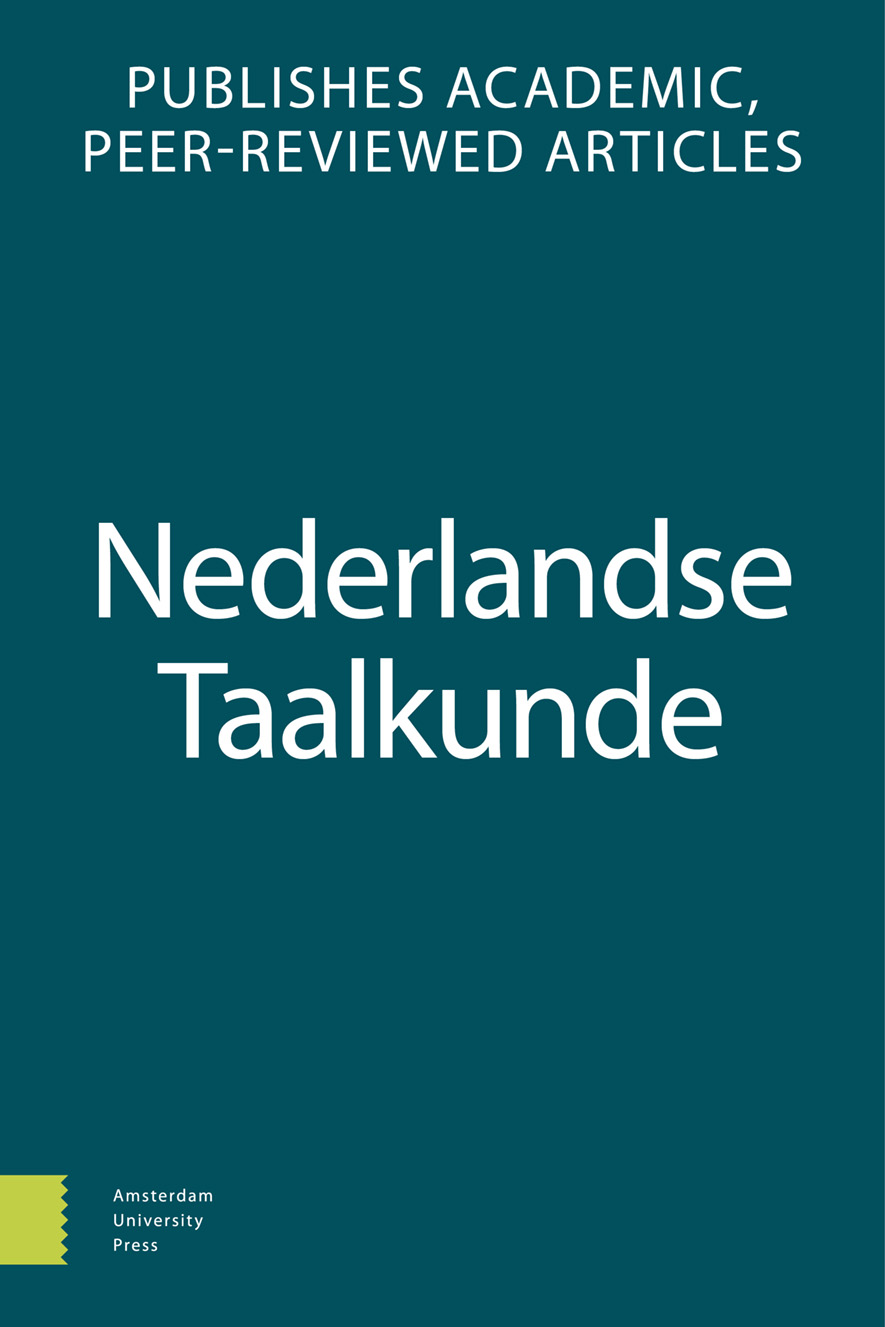-
oa Language-specific tendencies towards morphological or syntactic constructions
A corpus study on adjective intensification in L1 Dutch, L1 French and L2 Dutch
- Amsterdam University Press
- Source: Nederlandse Taalkunde, Volume 22, Issue 3, Dec 2017, p. 389 - 420
Abstract
In this study, we present a corpus-based comparison of the use of intensifying constructions in written L1 Dutch (Corpus Hedendaags Nederlands) and written L1 French (Frantext). We subsequently discuss intensification in Dutch as a second language (L2 Dutch) by French-speaking learners (Leerdercorpus Nederlands). The analysis adopts a constructional perspective (Goldberg 2006, Tomasello 2003) and aims to contrast French and Dutch preferences for morphological and syntactic intensifying constructions. Extending on the “Germanic Sandwich Hypothesis” (Van Haeringen 1956, Lamiroy 2011), we expect to find: i) more morphological intensifying constructions in Dutch, such as ‘elative’ compounds (e.g. knalrood ‘completely red’; Hoeksema 2012) and ii) more syntactic constructions in French, such as adverbial modification (e.g. tout rouge ‘completely red’) and adjective reduplication (e.g. rouge rouge ‘completely red’). The present study thus serves a twofold purpose: investigating whether the synthetic vs. analytic character of Germanic vs Romance languages holds in the domain of intensification, and on a more applied level, it contributes to identifying possible difficulties for French-speaking learners of Dutch in this field. Our corpus study partly confirms the expected difference in the use of morphological intensifying constructions between L1 Dutch and L1 French, with significantly more morphological intensifying constructions in L1 Dutch than in L1 French. Adverbial modification remains the default intensifying construction in both languages however. Whilst L2 Dutch productions displayed an overuse of intensifying adverbs (partly due to the overuse of ‘all-round’ intensifiers such as heel ‘very’), the learners did however also use elative compounds, a typical Germanic intensifying construction.


